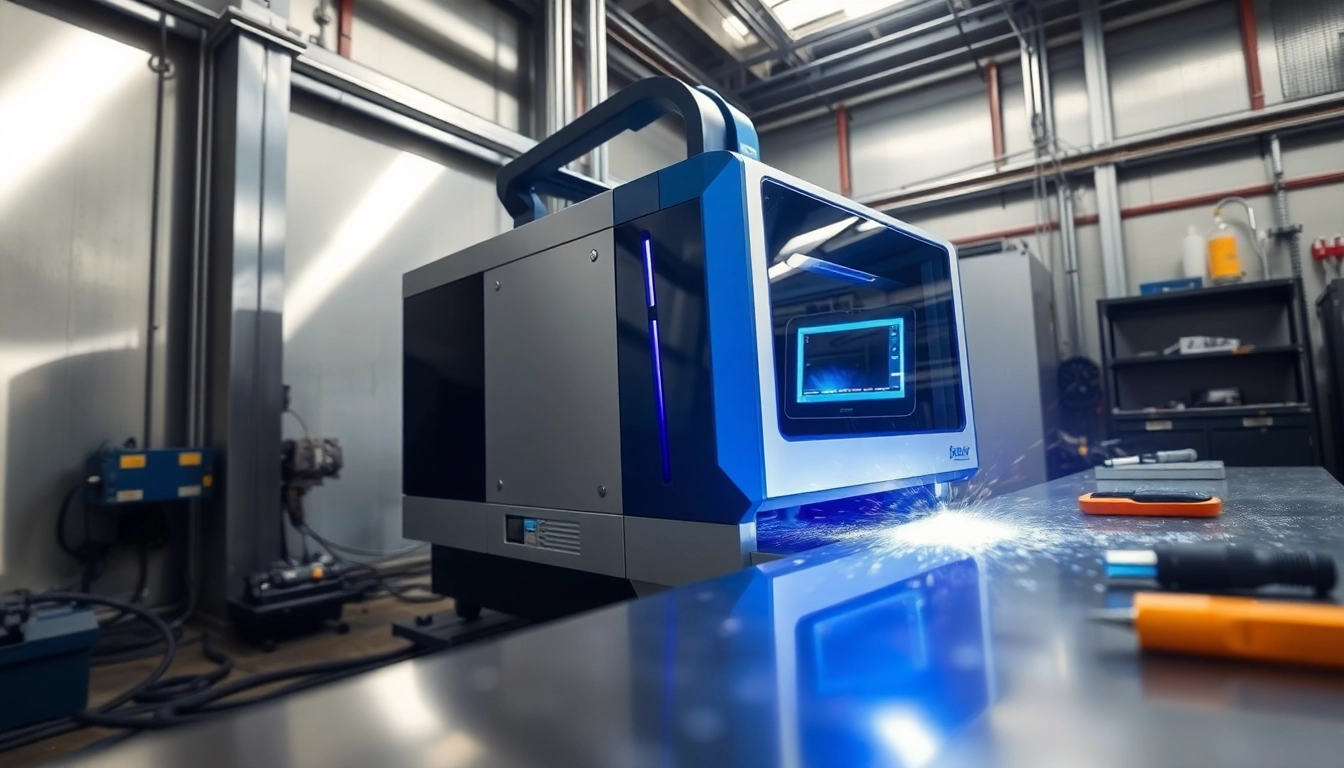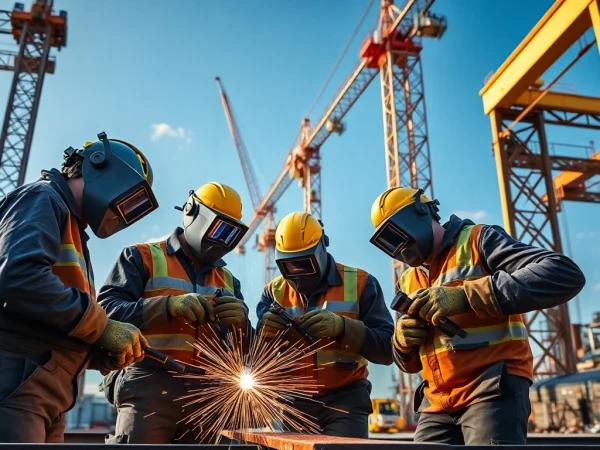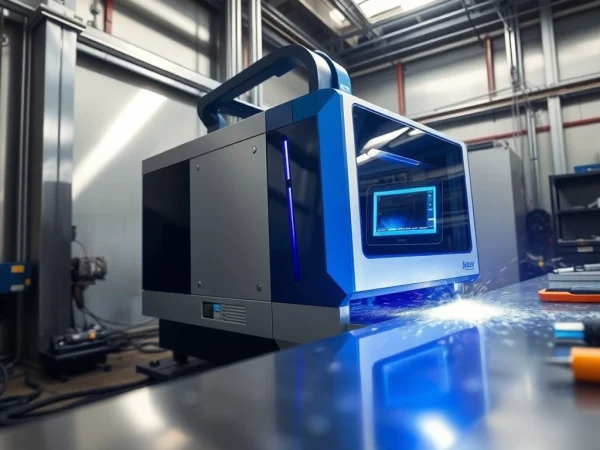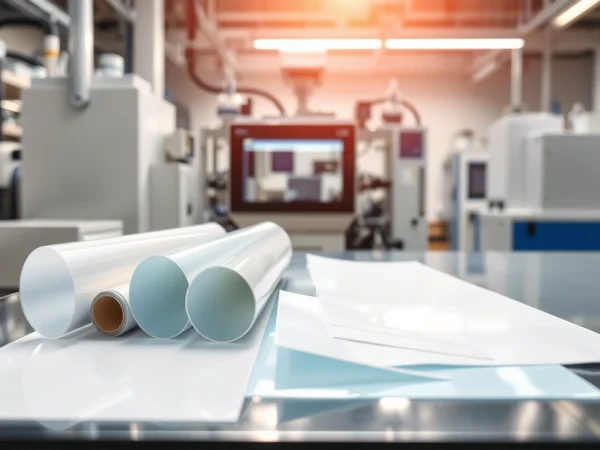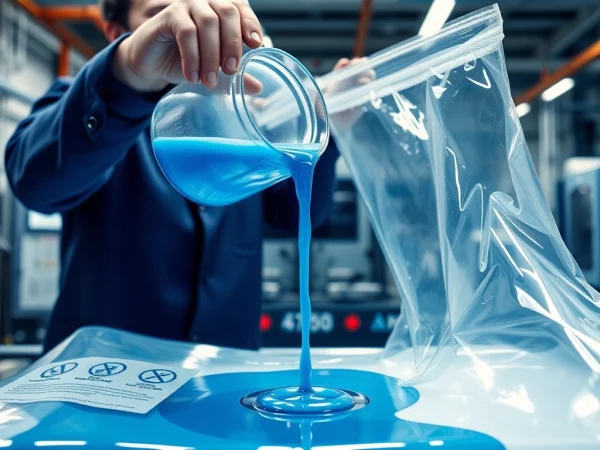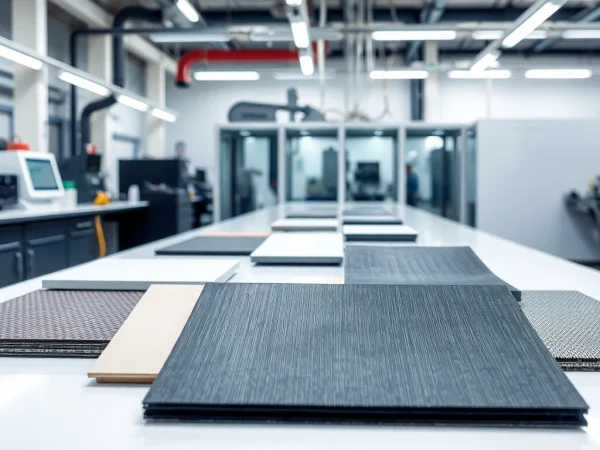Maximizing Efficiency with Laser Cleaning Machine: Benefits and Applications
Understanding the Laser Cleaning Machine
What is a Laser Cleaning Machine?
A Laser cleaning machine is a revolutionary device that uses high-intensity laser beams to remove contaminants, rust, and other unwanted materials from surfaces. Unlike traditional cleaning methods that might employ harsh chemicals or abrasive techniques, laser cleaning utilizes the focused energy of light. This process can effectively dislodge pollutants, allowing for a more precise and environmentally friendly cleaning solution.
How Does a Laser Cleaning Machine Work?
The operation of a laser cleaning machine is based on principles of physics. When the laser beam is applied to a surface, it generates high temperatures that cause the contaminants to evaporate or be ejected from the surface. This mechanism can tackle various materials ranging from metals and plastics to delicate surfaces such as wood or stone. Different types of lasers (e.g., solid-state, fiber, or gas lasers) can be employed depending on the specific application requirements.
Key Advantages of Using a Laser Cleaning Machine
Utilizing a laser cleaning machine presents multiple benefits:
- Environmentally Friendly: Unlike chemical cleaning agents, laser cleaning does not produce harmful waste and is less likely to harm the environment.
- Efficiency: This method can be faster than traditional techniques, often requiring less cleaning time and labor.
- Precision: Lasers can precisely target specific areas, which is crucial for delicate work like art restoration or part cleaning in manufacturing.
- Versatility: Laser cleaning machines can be adapted for various applications, making them suitable for industrial, artistic, and restoration contexts.
Applications of Laser Cleaning Machine
Industrial Uses of Laser Cleaning Machine
In industrial settings, laser cleaning machines are employed for various tasks including the removal of rust, paint stripping, and preparation of surfaces for welding or painting. This technology integrates into automated systems, allowing for high-speed production lines where cleanliness is paramount for ensuring quality in manufacturing processes. Industries such as automotive, aerospace, and oil & gas are increasingly adopting this method due to its efficiency and effectiveness.
Environmental Benefits of Laser Cleaning Machine
The environmental impact of a laser cleaning machine is a significant consideration. Traditional cleaning methods often involve toxic solvents and chemicals. In contrast, laser cleaning minimizes chemical usage and waste generation, aligning with sustainability goals. The ability to operate without the need for additional cleaning agents not only cuts down on costs but also reduces the ecological footprint of industrial operations.
Laser Cleaning Machine in Art Restoration
One of the most remarkable applications of a laser cleaning machine is in art restoration. This method allows conservators to delicately remove layers of grime, old varnish, and previous repair materials without damaging the original artwork. By carefully adjusting the intensity and focus of the laser, experts can target layers of materials that need to be removed while preserving the underlying surface. Notable achievements have been made in restoring sculptures, paintings, and historical artifacts using this precise technology.
Choosing the Right Laser Cleaning Machine
Factors to Consider When Selecting a Laser Cleaning Machine
When choosing a laser cleaning machine, it’s crucial to consider several factors:
- Type of Contaminant: Different contaminants and surfaces require different laser types. Understanding the material composition and nature of the pollutants is vital.
- Power Output: The machine’s wattage will determine its cleaning capability. Higher power is typically better for tougher materials.
- Portability: Depending on your operational needs, consider whether a stationary or portable unit is more suitable.
- Budget: Establish a budget that accounts for initial purchase costs as well as ongoing maintenance and operational costs.
Comparing Different Laser Cleaning Machines
When comparing various laser cleaning machines, it is essential to conduct a thorough analysis of their specifications. Look for reviews and case studies that demonstrate how different machines have performed in similar applications. The technology used, ease of use, and support offered by the manufacturer can greatly affect the effectiveness and satisfaction derived from the equipment.
Cost-Benefit Analysis of Laser Cleaning Machine
Investing in a laser cleaning machine can present a significant upfront cost. However, performing a cost-benefit analysis is crucial for understanding the long-term savings and efficiency gains. Consider factors such as:
- Reduction in chemical expenditures
- Lower labor costs due to increased efficiency
- Improved operational uptime
- Potential reduction in waste disposal costs
By calculating these metrics, organizations can make informed decisions regarding the return on investment associated with purchasing a laser cleaning machine.
Best Practices for Operating Laser Cleaning Machine
Safety Protocols for Laser Cleaning Machine
Ensuring safety while operating a laser cleaning machine is paramount. Operators should adhere to established safety protocols, including:
- Wearing appropriate personal protective equipment (PPE) such as goggles, gloves, and protective clothing.
- Conducting regular safety training for operators to ensure compliance and awareness of hazards.
- Implementing safety interlocks and emergency stop systems to halt operation immediately in case of a malfunction.
Maintenance Tips for Laser Cleaning Machine
Regular maintenance of a laser cleaning machine ensures optimal performance. Key maintenance practices include:
- Routine inspections for signs of wear and tear on components, ensuring that lenses and mirrors are clean.
- Calibrating the machine periodically to maintain accuracy in operation.
- Maintaining detailed operational logs to track performance and any issues that arise, facilitating effective troubleshooting.
Training Needs for Laser Cleaning Machine Operators
Proper training is essential for operators of laser cleaning machines. Training programs should cover:
- Understanding the technology and operational principles behind laser cleaning.
- Hands-on training for setting up and operating the machine efficiently and safely.
- Emergency response training to ensure operators know how to act in case of a malfunction or accident.
The Future of Laser Cleaning Technology
Innovations in Laser Cleaning Machine Design
The future of laser cleaning technology is poised for exciting advancements. Innovations in design are likely to include:
- Development of lightweight, portable units that maintain high efficiency, making laser cleaning more accessible to smaller operations.
- Integration of AI and machine learning for improved process monitoring, enhancing user control and operational efficiency.
- Advancements in laser materials that increase effectiveness against an even broader range of contaminants.
Market Trends and Predictions for Laser Cleaning Machine
Market trends indicate an increasing shift towards automated laser cleaning solutions in various industries. As industries become more aware of the environmental benefits and efficiency gains, the demand for laser cleaning machines is expected to grow. Data suggests that innovations in laser technology could also lead to the expansion of applications in sectors like aerospace, automotive, and even hospitality for surface sanitation.
Potential Challenges Facing Laser Cleaning Machine Adoption
Despite the potential, there are challenges that could hinder the widespread adoption of laser cleaning machines. Common challenges include:
- High initial investment costs that may deter smaller businesses from adopting the technology.
- Operators’ skill requirements, as specialized knowledge is necessary to operate these machines effectively and safely.
- The need for continuous innovation to keep up with evolving materials and contaminants.
Addressing these challenges will be vital for manufacturers to ensure that the benefits of laser cleaning machines can be realized across a broader range of applications.
